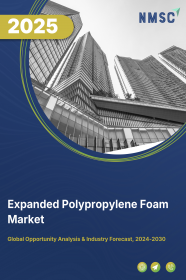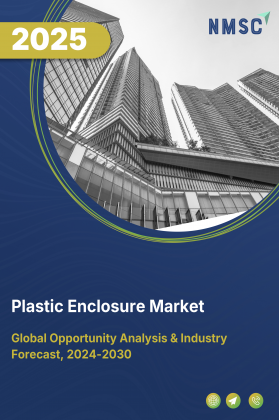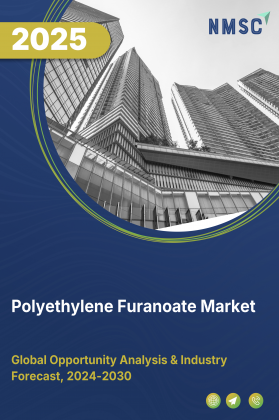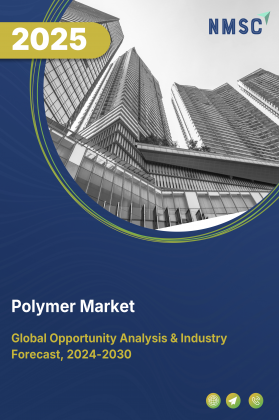
Expanded Polypropylene Foam Market by Raw Material (Synthetic Polypropylene and Bio-based Polypropylene), by Form (Fabricated EPP, Molded EPP, and Others), by Product (Low Density, Medium Density, Porous PP, and High Density), and by End-User (Automotive, Packaging, Consumer Goods, Electronics, Logistics, Pharmaceuticals, and Others) – Global Opportunity Analysis and Industry Forecast 2022-2030
Market Definition:
The Expanded Polypropylene Foam Market size was valued at USD 1.10 billion in 2021 and is predicted to reach USD 4.50 billion by 2030 with a CAGR of 7.5% from 2022-2030.
Expanded polypropylene (EPP) refers to closed cell-bead foam that is highly versatile and tough. It has a unique range of properties such as thermal insulation, chemical resistance, high strength-to-weight ratio and buoyancy that is highly water resistant. It requires a precise and complex manufacturing process with highly specialized custom-made equipment operated by skilled professionals. EPP foam is quite sturdy, and is completely sustainable as it can be recycled. It has numerous applications in manufacturing industries such as food preservation, waterproofing, furniture, and design along with shipbuilding, wrapping and industrial packaging.
Market Dynamics and Trends:
The demand for expanded polypropylene foam is increasing in end-use industries such as consumer goods, furniture and packaging owing to its water and chemical resistance properties coupled with ease of fabrication, which allows custom designing and printing. Also, EPP foams are extensively used in vehicles due to their excellent recoverability and ability to absorb the impact energy features. Moreover, rising production of electric cars influences the EPP foam market as they are used to make the electric cars lightweight and thermally insulated along with enhancing the energy absorption capabilities.
For instance, in October 2021, BASF expanded the product range of the Neopolen family with the introduction of NEOPOLEN P 9434+ LB. The new product shows high tolerance to chemicals, static and dynamic loading that shows low water uptake tendency along with considerably less friction noise. The product is particularly suitable for application in toys and leisure items, dunnage trays in automotive production and others. In addition, rising popularity of e-commerce owing to the hectic lifestyle, rising disposable income and increasing penetration of internet are pushing the demand for EPP foam. For instance, according to the United Nations Conference on Trade and Development (UNCTAD), the global e-commerce sales reached a gigantic valuation of USD 25.6 trillion in 2021.
However, volatility of costs associated with EPP foams over other foams along with regulations governing safety standards and the hazards posed by chemical compounds such as acids, mercury, and potassium cyanide among others are expected to restrain the growth of market during the forecast period. On the other hand, rise in the expansion of bio-based polypropylene foam, as well as alternatives for (expanded polystyrene) EPS and (expanded polyethylene) EPE products by EPP foams are expected to create lucrative growth opportunities for the expanded polypropylene market players in the future.
Market Segmentations and Scope of the Study:
The expanded polypropylene foam market size is segmented on the basis of raw material, form, product, end user, and geography. On the basis of raw material, the market is classified into synthetic polypropylene and bio-based polypropylene. On the basis of form, the market is divided into fabricated EPP, molded EPP, and other forms. On the basis of product, the market is divided into low density, medium density, porous PP, and high density. On the basis of end user, the market is classified into automotive, packaging, consumer goods, electronics, logistics, pharmaceuticals and others. The geography breakdown and analysis of each of the aforesaid segments includes regions comprising North America, Europe, Asia-Pacific, and RoW.
Geographical Analysis:
Asia-Pacific region holds the lion share of expanded polypropylene foam market at present and is expected to continue its dominance during the forecast period. This is attributed to the growing automotive and manufacturing industries in this region that ensure fuel economy and minimize emissions owing to the increasing environmental concerns, especially in China. For instance, according to the Organisation Internationale des Constructeurs d'Automobiles (OICA), China is the world’s largest producer of vehicles, manufacturing more than 21.4 million cars and 4.6 million commercial vehicles in 2021. The total production of just over 26 million vehicles.
Also, rise in population in this region leads to the growing demand for consumer goods and packaging industries such as furniture, electronics and toys along with packed foods that uses EPP foams, which is expected to boost the market in this region. Moreover, growing export trade along with flourishing electronic & electrical industry are important factors driving the market. For instance, according to the World Trade Organization (WTO), China was the top exporter of merchandise trade, accounting for 13% of the global trade with total merchandise export trade of around USD 2,323 billion in 2020.
On the other hand, North America is expected to witness a rapid rise in the expanded polypropylene foam market due to the continuous technological advancements such as moldable expanded bead foams and PP foam extrusion technology, presence of leading packaging giants along with rising focus towards sustainability and increasing consumer spending on daily used products.
For instance, in 2019, as per the US Flexible Packaging Association (FPA), the flexible packing business recorded a sales value of USD 33.6 billion. Also, growing e-commerce industry in this region coupled with online shopping platforms for purchasing various items that require EPP foams for better protection while shipping is positively influencing the market. For instance, some major e-commerce companies in North America include Apple Inc., Amazon.com Inc., Best Buy Co. Inc., eBay Inc., Home Depot Product Authority Inc., Wal-Mart Stores Inc., that provide deliveries of various consumer goods are highly contributing to the growth of EPP foam market.
Competitive Landscape:
The expanded polypropylene foam market comprises of various players such as JSP Corporation, Kaneka Corporation, Hanwha Chemical Corporation, BASF SE, DS Smith, BEWI, The Woodbridge Group, Sonoco Products Company, Knauf Industries and Armacell International. These manufacturers are actively indulging in product launches and strategic acquisitions to enhance their product and increase their growth as well as geographical reach.
For instance, in January 2022, JSP Corporation had developed ARPRO REvolution with a recycled content close to 100%. This product has the lowest CO2 footprint and is perfectly targeted for non-technical applications such as packaging, leisure and furniture applications. Also, in April 2021, BEWI had announced that to enter into an agreement to acquire a majority stake of the listed Polish company IZOBLOK, a leading European provider of expanded polypropylene (EPP) components. This acquisition is intended to significantly strengthen the market position of BEWI in the automotive industry.
Key Benefits:
-
The expanded polypropylene foam market report provides the quantitative analysis of the current market and estimations through 2022-2030 that assist in identifying the prevailing market opportunities to capitalize on.
-
The study comprises a deep dive analysis of the expanded polypropylene foam market trend including the current and future trends for depicting the prevalent investment pockets in the market.
-
The information related to key drivers, restraints and opportunities and their impact on the expanded polypropylene foam market is provided in the report.
-
The competitive analysis of the market players along with their market share in the expanded polypropylene foam market.
-
The SWOT analysis and Porters Five Forces model is elaborated in the study.
-
Value chain analysis in the market study provides a clear picture of the stakeholders’ roles.
Key Market Segments:
By Raw Material
-
Synthetic Polypropylene
-
Bio-based Polypropylene
By Form
-
Fabricated EPP
-
Molded EPP
-
Other Forms
By Product
-
Low Density
-
Medium Density
-
Porous PP
-
High Density
By End-User
-
Automotive
-
Packaging
-
Consumer Goods
-
Electronics
-
Logistics
-
Pharmaceuticals
-
Others
By Geography
-
North America
-
U.S
-
Canada
-
Mexico
-
-
Europe
-
UK
-
Germany
-
France
-
Italy
-
Spain
-
Rest of Europe
-
-
Asia-Pacific
-
China
-
India
-
Japan
-
South Korea
-
Australia
-
Rest of Asia-Pacific
-
-
RoW
-
UAE
-
Saudi Arabia
-
South Africa
-
Brazil
-
Remaining countries
-
Key Players:
-
JSP Corporation
-
Kaneka Corporation
-
Hanwha Chemical Corporation
-
BASF SE
-
DS Smith
-
BEWI
-
The Woodbridge Group
-
Sonoco Products Company
-
Knauf Industries
-
Armacell International




















 Speak to Our Analyst
Speak to Our Analyst





















